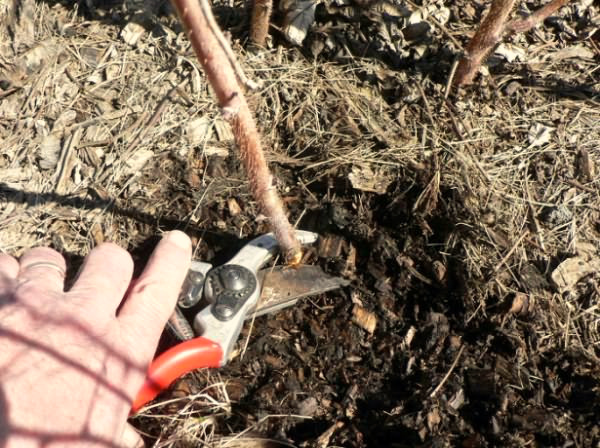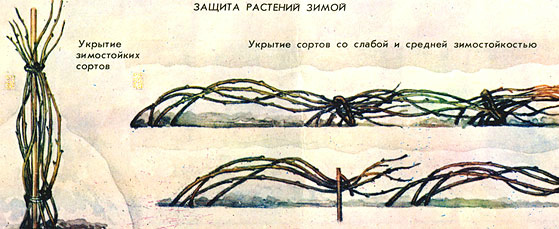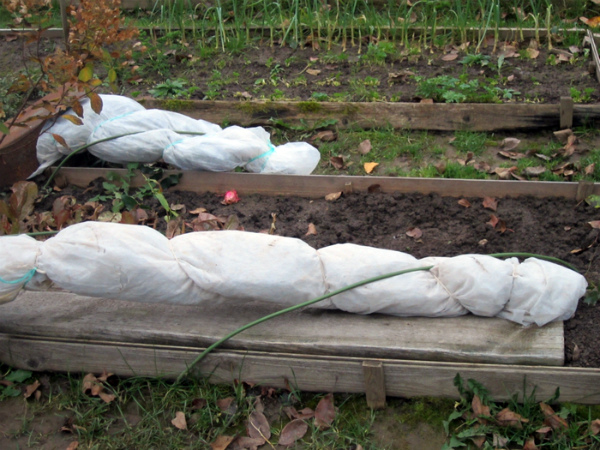How to properly prepare and cover blackberries for the winter
Content
When to start caring for blackberries for the winter?
Preparation of blackberries for winter begins immediately after the end of the harvest. This period may be different depending on the climate of the region, or the type of culture. If the variety is early and fruiting ends in August, then preparatory activities can be started from mid-September. For late-ripening varieties whose harvest ends in September, winter preparation should begin in October.
Preparation is not only about covering the bushes. Before covering the blackberry with insulating material, it is necessary to pay attention to a number of auxiliary measures that will facilitate the wintering of the culture:
- Infrequent but regular watering (in the absence of rain). Do not leave the roots dry for the winter, moreover, it is easier for the plant to absorb nutrients from moist soil.
- Thinning bushes. In the fall, after harvesting, all shoots that have bearing fruit in the current season should be removed, since they will no longer yield a harvest, but will only thicken the bush and consume nutrients.
- Removing unnecessary young branches. It is believed that 6-8 shoots are enough for a good yield of the bush, and since blackberries grow very quickly, excess shoots should also be cut out in the fall. This procedure is carried out after removing the fruiting branches.
- Removal from the support. The shoots of the creeping blackberry can have an impressive length (4–10 m), so they are removed from the trellis before the shelter, wound up or neatly folded.
- Top dressing. Blackberries are not demanding on fertilizers, however, in order to make it easier for the plant to overwinter, autumn feeding with a potassium mixture without chlorine is recommended.
Blackberries are covered with insulating material or mulch immediately before frosts, or at an established temperature of -3–5 C °. As a rule, such a degree is established in late October - early November, but you need to look at the weather. It is not recommended to cover in the past. First, it doesn't make sense. Secondly, premature shelter can harm the plant, namely:
- lead to damping of roots and shoots - the plant continues to grow in the warmth, and since it lacks light under the shelter, all its parts are cut out;
- in the absence of frost, moisture accumulates under the shelter, which is also detrimental to blackberries - fungal diseases develop, and the roots do not have enough oxygen.
Many novice gardeners, who have not yet encountered blackberry freezing, doubt whether it is necessary to cover the bushes for the winter or whether it is possible to do without it. The peculiarity of blackberries is that the berries are formed only on the shoots of the second year of life. Thus, we shelter annual young shoots that have not yet had time to stiffen, and are very sensitive to the cold. If they freeze, there will be no harvest next year.That is why every gardener should definitely ask the question of how to prepare blackberries for winter correctly and in a timely manner.
An important stage in preparation for wintering is pruning blackberries
Autumn pruning is more important for blackberries than spring pruning. If in the spring the event is predominantly sanitary, then in the fall, pruning helps prepare the blackberry bush for winter, simplifies the process of sheltering it.
Autumn pruning consists of three steps:
- removing old shoots;
- thinning the bush (removing some of the young branches);
- pinching (shortening) the tops of the remaining shoots.
All biennial branches that have borne fruit in the current summer are cut out at the root - you should not leave the stumps, as pests can settle in them, or rot can develop, which will greatly complicate the wintering of blackberries. After only young branches remain, the bush is thinned out - the weakest young shoots are removed, leaving only 6-8 of the strongest branches - they will form a crop next year.
In conclusion, the tops of the remaining shoots are shortened by 20-25 cm, but here it all depends on the variety of blackberries, more precisely on the length of its shoots. For blackberries with erect shoots, it is permissible to cut a fourth of the shoot; in creeping varieties, a third of the shoot can be cut. Repaired blackberries are cut completely at the base. It is characterized by fruiting on the shoots of the first year - in the spring, in place of the cut branches, new ones will grow and give a crop. The cut parts of the branches must be collected and burned - this measure will prevent the spread of diseases and pest larvae.
How to cover blackberries and what material to use?
As already mentioned, it is necessary to cover the blackberry bushes immediately before the onset of frost. After the excess growth has been removed, the shoots are bent to the ground as low as possible, after which they are covered with insulating material. It is easier to cover a creeping blackberry, because its shoots are easily bent and laid on the ground. A different approach is needed to erect blackberries - in the summer, a small load is tied to the tops of the branches so that, under its weight, the branches themselves tend to the ground. When the leaves fall from the bush, the shoots bend down more, fix them with hooks, and also cover them.
For convenience, erect shoots can be tied in bunches. If you need to cover the whole planting, consisting of several bushes, then each bundle is tied with twine to the neighboring one, or attached to one support, with which it is then covered. As for the creeping blackberry, everything is much simpler here. The branches must be removed from the trellis, rolled up or laid in layers. Many gardeners are wondering: is it possible to lay branches directly on the ground? On sandy soil, in which moisture does not stagnate, it is possible, but it is safer to still lay the branches on a thin wooden flooring or sawdust. A bush protected in this way is guaranteed not to rot from excess moisture when the snow melts.
Snow is the best shelter for plants. Even if the bush is covered with insulating material, the "fur coat" made of snow will not be superfluous. You can safely pour it on top of the shelter - the bush, which is additionally covered with snow, retains heat better and longer.
You can cover blackberries with natural materials, as well as synthetic ones. From natural ones, suitable as a shelter:
- peat;
- humus;
- sawdust, chips;
- dry tops of garden crops (corn, beets);
- dry foliage of non-fruit crops - larvae of pests can persist in the leaves of fruit trees;
- straw, hay;
- spruce branches.
When using organics, the question may arise: are all these materials safe for blackberries? Unfortunately, in a shelter made of straw, tops or hay, rodents are often found, which really do irreparable harm to the bushes. Therefore, for supporters of everything natural, experienced gardeners recommend covering the blackberries with spruce branches from needles. Rodents bypass such a shelter, and in the spring it is very easy to remove.
Of the finished covering materials, non-woven insulation is most often used (Spunbond, Agrospan, Lutrasil). From less modern, but long-proven materials, roofing material and plastic wrap can be distinguished. In areas with harsh climates, gardeners use organic and artificial shelter in tandem, since one of them is not enough at very low temperatures.
Video "Shelter of the garden blackberry"
This video demonstrates how a frost-resistant garden crop should be protected from icing for the winter.






